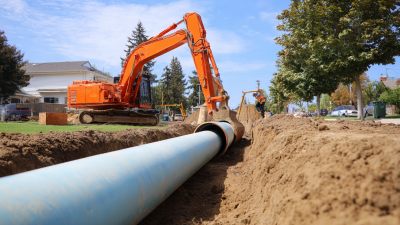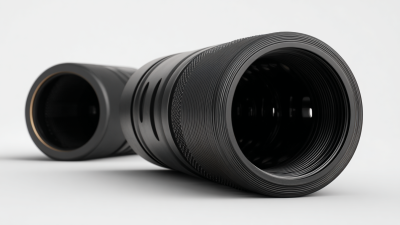Understanding Pipe in Pipe Repair Techniques for Efficient Home Maintenance
 In the realm of home maintenance, addressing plumbing issues is paramount for maintaining efficiency and safeguarding investments. An emerging solution that is gaining traction is the
"pipe in pipe repair" technique, which has been praised for its effectiveness in mitigating leaks and extending the lifespan of existing plumbing systems.
According to a report by the International Association of Plumbing and Mechanical Officials (IAPMO), nearly 20% of residential water usage is due to leaks, emphasizing the critical need for advanced repair methods.
Furthermore, research from the Plumbing Manufacturers International (PMI) indicates that using modern repair techniques can reduce repair times by up to 50%, showcasing the potential of innovations like
pipe in pipe repair. As homeowners increasingly seek out efficient, long-term solutions, understanding the advantages and implementation of this method becomes essential for sustainable home maintenance.
In the realm of home maintenance, addressing plumbing issues is paramount for maintaining efficiency and safeguarding investments. An emerging solution that is gaining traction is the
"pipe in pipe repair" technique, which has been praised for its effectiveness in mitigating leaks and extending the lifespan of existing plumbing systems.
According to a report by the International Association of Plumbing and Mechanical Officials (IAPMO), nearly 20% of residential water usage is due to leaks, emphasizing the critical need for advanced repair methods.
Furthermore, research from the Plumbing Manufacturers International (PMI) indicates that using modern repair techniques can reduce repair times by up to 50%, showcasing the potential of innovations like
pipe in pipe repair. As homeowners increasingly seek out efficient, long-term solutions, understanding the advantages and implementation of this method becomes essential for sustainable home maintenance.
Types of Pipe in Pipe Repair Techniques
The landscape of pipe repair techniques is evolving, particularly with the rise of trenchless technologies, which provide efficient and minimally invasive solutions for homeowners. Among these techniques, the use of Petrosleeve for circumferential crack repairs has shown promising interim study results. This non-intrusive method allows for the reinforcement of existing pipes without the need for extensive excavation, significantly reducing repair time and costs.
Additionally, advancements in technologies such as natural language processing have introduced innovative approaches to assessing pipe conditions. A recent study developed an automated framework that can determine pipe defect ratings by analyzing repair documents, streamlining the maintenance process for various pipeline systems. Furthermore, experimental studies on quick-locking reinforcement models demonstrate their effectiveness in addressing local defects in pipelines, particularly in challenging environments. These developments indicate a shift toward smarter, more efficient repair strategies, positioning homeowners to better manage their plumbing systems over time.
Understanding Pipe in Pipe Repair Techniques for Efficient Home Maintenance - Types of Pipe in Pipe Repair Techniques
| Repair Technique | Description | Ideal Use Case | Advantages | Disadvantages |
|---|---|---|---|---|
| Epoxy Coating | A protective layer applied to the interior of the pipe to prevent further corrosion. | Small leaks and corrosion. | Cost-effective and quick application. | Not suitable for large-scale damage. |
| Pipe Bursting | A trenchless method that involves breaking apart the old pipe and inserting a new one. | Severely damaged pipes. | Minimizes disruption to landscape. | Higher overall cost and requires specialized equipment. |
| Slip Lining | Involves inserting a smaller pipe into the existing damaged pipe. | Pipes with moderate to severe damage. | Quick installation and less invasive. | Reduces flow capacity; may not work for all sizes. |
| Patching | Involves applying a patch or sleeves on the affected areas of the pipe. | Localized leaks. | Cost-effective and quick repair. | Temporary solution; may require further repairs. |
| Cured-in-Place Piping (CIPP) | A resin-saturated felt tube is installed and cured in place to create a new pipe. | Extensive pipe damage. | Strong and durable; seamless repair. | Longer curing time; initial cost can be high. |
Materials Used in Pipe in Pipe Systems
The materials used in pipe-in-pipe systems play a crucial role in the effectiveness and efficiency of home maintenance. These systems primarily utilize various types of pipes, including plastic, metal, and concrete, each offering distinct advantages. Plastic pipes, particularly those made from PVC and PE, are gaining popularity due to their lightweight nature, resistance to corrosion, and lower environmental impact compared to traditional materials like concrete and iron. Moreover, advancements in manufacturing have led to the development of more sustainable pipe systems, aligning with the broader goal of transitioning towards a circular economy.
In addition to plastic, metal pipes provide durability and strength, essential for high-pressure applications, although they can be prone to corrosion. On the other hand, concrete pipes are often used for larger-scale drainage systems due to their robustness. The choice of material not only affects the longevity of the pipes but also influences the overall maintenance strategy and cost-effectiveness of the plumbing system. Understanding these materials is vital for homeowners looking to implement efficient and sustainable solutions in their pipe repair techniques.

Advantages of Pipe in Pipe Methods for Home Maintenance
The "Pipe in Pipe" repair technique is gaining traction in home maintenance due to its multiple advantages. This method involves inserting a new pipe inside an existing one, which not only simplifies repairs but also enhances reliability and longevity. One of the significant benefits of "Pipe in Pipe" systems is their ability to protect against leaks and corrosion. Given that household leaks can waste nearly 1 trillion gallons of water annually, adopting this technique can lead to significant water savings and cost reductions in the long run.
To effectively maintain your plumbing systems, especially in winter, here are some tips: First, insulate pipes in unheated areas of your home to prevent freezing. Use foam pipe insulation or heat tape on vulnerable pipes. Second, during extreme cold, let faucets drip slightly; this keeps water moving and reduces pressure in your pipes. Finally, ensure your home is well-insulated, particularly in the roof and loft areas, to minimize heat loss and reduce the risk of frozen pipes. Incorporating these strategies not only protects your plumbing but also complements the efficiency of the "Pipe in Pipe" method, ensuring effective home maintenance all year round.

Common Applications of Pipe in Pipe Repairs
Pipe-in-pipe repair techniques have gained popularity in the plumbing industry due to their efficiency and effectiveness in addressing issues related to water supply and heating systems. Common applications of pipe-in-pipe repairs include retrofitting old heating systems, repairing leaks in residential plumbing without invasive excavation, and enhancing the durability of aging pipework.
According to a report by the American Society of Plumbing Engineers, as much as 35% of residential plumbing systems face issues that can be mitigated through the use of pipe-in-pipe techniques. These methods not only reduce the risk of future leaks but also minimize water wastage and energy loss, making them an eco-friendly choice. Moreover, studies show that implementing these repairs can extend the lifespan of plumbing infrastructure by up to 20 years, proving beneficial in long-term maintenance planning.
Additionally, pipe-in-pipe solutions are particularly effective in high-rise buildings where access to traditional repairs may be limited. According to industry insights from the Plumbing-Heating-Cooling Contractors Association, maintaining plumbing efficiency in urban environments increases property values and reduces overall maintenance costs for homeowners. With advancements in technology and materials, these repair techniques continue to evolve, offering versatile solutions for modern plumbing challenges.
Understanding Pipe in Pipe Repair Techniques for Efficient Home Maintenance
This chart illustrates the common applications of pipe in pipe repair techniques, showcasing the percentage distribution of their usage in residential maintenance projects.
Steps for Implementing Pipe in Pipe Repairs in Your Home
When faced with the challenge of repairing plumbing issues in your home, using the pipe-in-pipe technique can be an efficient method. This approach involves
inserting a smaller replacement pipe within an existing damaged pipe, thereby restoring functionality without the need for extensive excavation. The first step is to assess the damaged pipe thoroughly.
Check for leaks, corrosion, or cracks, and determine whether the overall integrity of the existing structure allows for this repair method.
Next, gather the necessary materials, including the new pipe, a coupling for secure attachment, and insulation if required. It’s essential to measure and cut the new pipe accurately to fit snugly inside the damaged one.
Before proceeding, ensure that the water supply is shut off to avoid unnecessary mess. After inserting the new pipe, utilize pipe adhesive or fittings to seal the connection properly.
Tips: Always wear gloves and safety goggles during the repair process to protect yourself from debris and sharp edges. Additionally, consider insulating the new pipe to prevent heat loss or condensation issues, which can arise with temperature fluctuations. Lastly, take some time to periodically check the repair for any signs of leaking or wear, as routine maintenance can extend the life of your plumbing system.
Related Posts
-

Exploring the Future of Pipe Rehabilitation: Innovations and Best Practices for Sustainable Infrastructure
-

Creative Applications of Sewer Pipe Sleeve Repair Techniques
-

Unlocking the Advantages of Pipe Sleeve Solutions for Global Procurement
-

Unlocking the Benefits of Sleeve Sewer Line Technology for Efficient Waste Management
-

Top 5 Innovations in Sewer Pipes: Revolutionizing Waste Management with Advanced Materials
-

What is a Sewer Pipe Sleeve and How Does It Work

